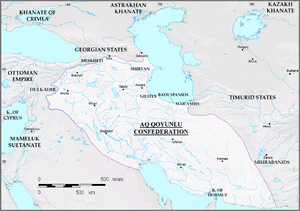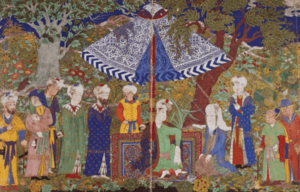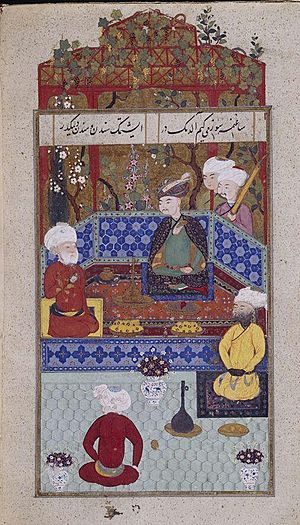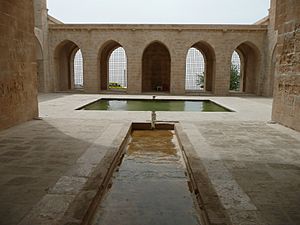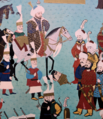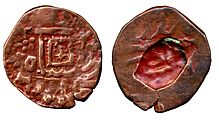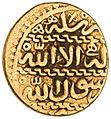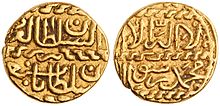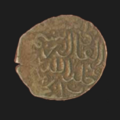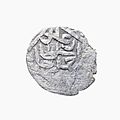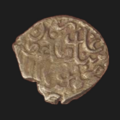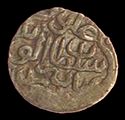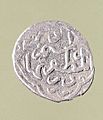Aq Qoyunlu facts for kids
Quick facts for kids
Aq Qoyunlu
آق قویونلو
|
|||||||||||
|---|---|---|---|---|---|---|---|---|---|---|---|
| 1378–1503 | |||||||||||
|
A flag (sanjak) from the period of the Uzun Hasan's reign (the original here)
|
|||||||||||
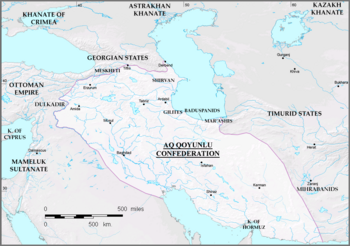
The Aq Qoyunlu confederation at its greatest extent under Uzun Hasan
|
|||||||||||
| Status | Confederate Sultanate | ||||||||||
| Capital |
|
||||||||||
| Common languages |
|
||||||||||
| Religion | Sunni Islam | ||||||||||
| Government | Monarchy | ||||||||||
| Ruler | |||||||||||
|
• 1378–1435
|
Qara Yuluk Uthman Beg | ||||||||||
|
• 1497–1503
|
Sultan Murad | ||||||||||
| Legislature |
|
||||||||||
| Historical era | Medieval | ||||||||||
|
• First raid on the Trapezuntine Empire by Tur Ali Beg
|
1340 | ||||||||||
|
• Siege of Trebizond
|
1348 | ||||||||||
|
• Established
|
1378 | ||||||||||
|
• Coup by Uzun Hasan
|
Autumn 1452 | ||||||||||
|
• Reunification
|
1457 | ||||||||||
|
• Death of Ahmad Beg, division of the Aq Qoyunlu
|
December, 1497 | ||||||||||
|
• Collapse of the Aq Qoyunlu rule in Iran
|
Summer 1503 | ||||||||||
|
• End of the Aq Qoyunlu rule in Mesopotamia
|
Autumn 1508 | ||||||||||
| Currency | Akçe Ashrafi Dinar Tanka Hasanbegî (equal to 2 akçe) |
||||||||||
|
|||||||||||
The Aq Qoyunlu (pronounced "Ahk Koy-oon-loo"), also known as the White Sheep Turkomans, was a powerful group of Turkoman tribes. Their name literally means "those with white sheep." They followed Sunni Islam and had a culture influenced by Persian traditions.
The Aq Qoyunlu started in the Diyarbakir region of what is now eastern Turkey. They ruled from 1378 to 1503. At their strongest, they also controlled parts of Armenia, Azerbaijan, much of Iran, Iraq, and even had influence over the Kingdom of Hormuz near Oman. Their empire reached its peak under a famous leader named Uzun Hasan.
Contents
History of the White Sheep Turkomans
What does "Aq Qoyunlu" mean?
The name "Aq Qoyunlu" means "those with white sheep." It first appeared in writings from the late 1300s. Some people think the name came from old animal symbols. However, it's more likely it just referred to the main color of their sheep flocks. Sheep were very important for these nomadic groups.
Where did the Aq Qoyunlu come from?
The Aq Qoyunlu tribes were first mentioned in the 1340s. They lived in the Bayburt area, south of the Pontic Mountains. Early records show a leader named Tur Ali Beg. He was a powerful chief of the "Turks of Amid [Diyarbakir]."
Under Tur Ali Beg, they tried to capture the city of Trebizond but didn't succeed. Several of their leaders, including Qara Yuluk Uthman Beg, married princesses from the Byzantine Empire. This showed their growing importance.
By the mid-1300s, the Aq Qoyunlu tribes moved between summer pastures in Armenia and winter pastures near Diyarbakır and Sivas. They often fought with another group called the Qara Qoyunlu, or "Black Sheep Turkomans." The main tribe of the Aq Qoyunlu was the Bayandur tribe.
Uzun Hasan, a later leader, claimed his family came from Oghuz Khan and his grandson, Bayandur Khan. He even used the tamga (seal) of the Bayandur tribe as his state symbol. This symbol appeared on their coins, documents, and flags.
The Rise of Uzun Hasan
The Aq Qoyunlu gained their first major land in 1402. The famous conqueror Timur gave them control of Diyar Bakr. For a long time, they couldn't expand much because of their rivals, the Qara Qoyunlu.
However, everything changed when Uzun Hasan became their leader. In 1467, he defeated Jahan Shah, the leader of the Black Sheep Turkomans. After this victory, Uzun Hasan became even more powerful. He captured Baghdad and expanded his rule into Iran, reaching as far east as Khorasan.
At this time, the powerful Ottoman Empire was also trying to expand east. This was a big threat to the Aq Qoyunlu. Uzun Hasan tried to get help from Venice, a strong enemy of the Ottomans. But the promised help never arrived. As a result, Uzun Hasan was defeated by the Ottomans in the Battle of Otlukbeli in 1473. Even so, the Aq Qoyunlu empire was not completely destroyed.
Uzun Hasan was interested in history and culture. He ordered a history book about the Aq Qoyunlu to be written. He also supported religious groups and gave money to cities. He even married one of his daughters to Haydar, the leader of the Safavid religious group.
Sultan Ya'qub's Reign
When Uzun Hasan died in 1478, his son Khalil Mirza took over. But Khalil was soon defeated by his younger brother, Ya'qub, in a battle in July 1478.
Ya'qub ruled from 1478 to 1490. He managed to keep the empire together for a while. However, he faced many challenges. In his first four years, seven different people tried to take his throne.
Unlike his father, Ya'qub was not as popular with the common people, especially the Turks. Many Turks started to support the Safaviyya religious group, which was becoming very strong. Ya'qub initially sent the Safavid leader, Sheikh Haydar, to fight against other groups. But Ya'qub soon worried about Sheikh Haydar's growing power. He decided to break their alliance.
Sheikh Haydar then attacked one of Ya'qub's allies. Ya'qub sent his troops, who defeated and killed Haydar. They also captured Haydar's three sons. This event made many Turks even more supportive of the Safavid cause.
After Ya'qub's death, the Aq Qoyunlu empire fell into civil war. The different leaders fought among themselves, weakening the state. The Safavids, led by Ismail I, took advantage of this. In 1501, Ismail I defeated the Aq Qoyunlu in a battle near Nakhchivan.
The last Aq Qoyunlu leader, Sultan Murad, was also defeated by Ismail I. Murad tried to hold on to power in Baghdad but eventually had to retreat. By 1508, the Aq Qoyunlu rule ended in Mesopotamia, marking the collapse of their empire.
The Final Years and Ahmad Beg
After Uzun Hasan's death, his grandsons, Baysungur and Rustam, fought for power. Their cousin, Ahmad Beg, also entered the scene. Ahmad Beg was the son of Uzun Hasan's eldest son, Ughurlu Muhammad. Ughurlu Muhammad had fled to the Ottoman Empire in 1475. The Ottoman Sultan, Mehmed the Conqueror, welcomed him and gave him his daughter in marriage. Ahmad Beg was born from this marriage.
Baysungur was removed from power in 1491. Rustam, who then ruled, allowed Sheikh Haydar Safavi's sons to return. However, they were later arrested again, but the youngest son, Ismail, escaped.
In 1497, Ahmad Beg, with help from the Ottomans, defeated Rustam. But after Ahmad's death, the Aq Qoyunlu state became even more divided. It was ruled by three different sultans in different regions.
The final collapse of the Aq Qoyunlu in Iran began in 1501. Ismail Safavi, who had gathered a large army, defeated them. He conquered many regions, including Iraq-Ajami, Fars, and Kerman by 1503. The last Aq Qoyunlu sultan, Murad, was defeated and killed by Ismail's warriors. This brought an end to the Aq Qoyunlu dynasty.
How the Aq Qoyunlu Governed
The Aq Qoyunlu leaders came from the Bayandur clan of the Oghuz Turks. They believed they were descendants of the legendary Oghuz Khagan. These leaders acted more like proper rulers than just warlords. They gained support from merchants and landowners in the Transcaucasia region (modern-day Armenia, Azerbaijan, and Georgia).
When Uzun Hasan conquered most of Iran, the center of power shifted east. The Aq Qoyunlu started to adopt Iranian ways of governing and culture. They kept the existing Iranian government structure and its officials. The top four government jobs were held by Iranians. These included the vizier (who led the main council), financial accountants, the person who put the state seal on documents, and the person in charge of the royal court.
Culture thrived under the Aq Qoyunlu. Even though they were Turkic, they supported Iranian culture. Uzun Hasan himself adopted Iranian customs and ruled like an Iranian king. He was proud of being Iranian. In his new capital, Tabriz, he ran a sophisticated Persian court. He used symbols of ancient Persian royalty and hired officials from earlier Iranian governments. Uzun Hasan used his wealth to gain the support of religious leaders and the city elite. He also helped the poor people in the countryside.
Ottoman Sultans used grand titles when writing to Aq Qoyunlu kings. They called them "King of Iranian Kings" and "Sultan of Iranian Sultans." Uzun Hasan also used the title "Padishah of Iran." This title was later used by his grandson, Ismail I, who founded the Safavid Empire.
Many important thinkers lived in the Aq Qoyunlu realm. These included poets like Ali Qushji and Jami, and the philosopher Jalal al-Din Davani.
Culture and Arts
The Aq Qoyunlu leaders supported Persian literature and poetry. Poets like Ahli Shirazi and Bābā Fighānī were popular at their court. By the time Yaʿqūb ruled, the Aq Qoyunlu court loved Persian poetry.
A famous poet named Nur al-Din 'Abd al-Rahman Jami wrote a Persian poem for Yaʿqūb and received a generous gift. Yaʿqūb also had other Persian poems dedicated to him.
Uzun Hasan and his son, Khalil, supported Sufi groups. Uzun Hasan built nearly 400 buildings for Sufi retreats in the Aq Qoyunlu region.
Military Structure
The Aq Qoyunlu army combined military traditions from both nomadic and settled cultures. Their army was made up of many different groups. These included soldiers from Azerbaijan, Persia, Iraq, Kurdistan, and various Turkoman tribes.
| Padishah (Sovereign) | Head of Defence Ministry Tavachi dari |
||||||||||||||||||||||||||||||||||||||||||||||||||||||||||
| Head of Guards Qorchu bashi |
Chief commander over army units (Amir al-Umara – Askeri qoshun) |
Flag bearer (Emir alem) |
Tavachi | Kadi nazir | Amir bitikchi | ||||||||||||||||||||||||||||||||||||||||||||||||||||||
| Royal bodyguard Boy nuker |
Guards (qorchu) |
Engineer corps | Chief Horseman (Emir Ahur) |
||||||||||||||||||||||||||||||||||||||||||||||||||||||||
| Garrisons | The superintendent of the hunt Amir-i Shikar |
||||||||||||||||||||||||||||||||||||||||||||||||||||||||||
| Artillery | Military inspector Ariz-i Lashkar |
||||||||||||||||||||||||||||||||||||||||||||||||||||||||||
| Road guards | Quartermaster Bukaul-i Lashkar |
||||||||||||||||||||||||||||||||||||||||||||||||||||||||||
| Regular army (Jeri) |
Search units Balarguchi |
||||||||||||||||||||||||||||||||||||||||||||||||||||||||||
| Nomad units Mir-i el |
Army Inspector Amiri Jandar |
Jandar units | |||||||||||||||||||||||||||||||||||||||||||||||||||||||||
| Head of Food Supply Rikabdar |
|||||||||||||||||||||||||||||||||||||||||||||||||||||||||||
| Head of Auxiliary troops Yasaul bashi |
Yasaul units | ||||||||||||||||||||||||||||||||||||||||||||||||||||||||||
| Head of Camping Yurtchu bashi |
Yurtchu units | ||||||||||||||||||||||||||||||||||||||||||||||||||||||||||
| Messenger Chavush |
|||||||||||||||||||||||||||||||||||||||||||||||||||||||||||
| Jasus | |||||||||||||||||||||||||||||||||||||||||||||||||||||||||||
| Secret agents / spies Sahib Habar |
|||||||||||||||||||||||||||||||||||||||||||||||||||||||||||
| Jagdiul | |||||||||||||||||||||||||||||||||||||||||||||||||||||||||||
| Head of Internal Affairs Eshik Agasi Bashi |
|||||||||||||||||||||||||||||||||||||||||||||||||||||||||||
Gallery
-
A flag (sanjak) belonging to Aq Qoyunlu during Uzun Hassan's reign. (Topkapı Palace museum).
-
Mehmed II and Ughurlu Muhammed (Hünername)
Coinage
See also
 In Spanish: Ak Koyunlu para niños
In Spanish: Ak Koyunlu para niños
- List of rulers of Aq Qoyunlu
- Turkmen invasions of Georgia
- Bozulus
Sources
- Bosworth, Clifford (1996) The New Islamic Dynasties: A Chronological and Genealogical Manual (2nd ed.) Columbia University Press, New York, ISBN: 0-231-10714-5
- "[1]". Encyclopaedia Islamica Online. (2015). Brill Online.
- Morby, John (2002) Dynasties of the World: A Chronological and Genealogical Handbook (2nd ed.) Oxford University Press, Oxford, England, ISBN: 0-19-860473-4
- Woods, John E. (1999) The Aqquyunlu: Clan, Confederation, Empire (2nd ed.) University of Utah Press, Salt Lake City, ISBN: 0-87480-565-1




